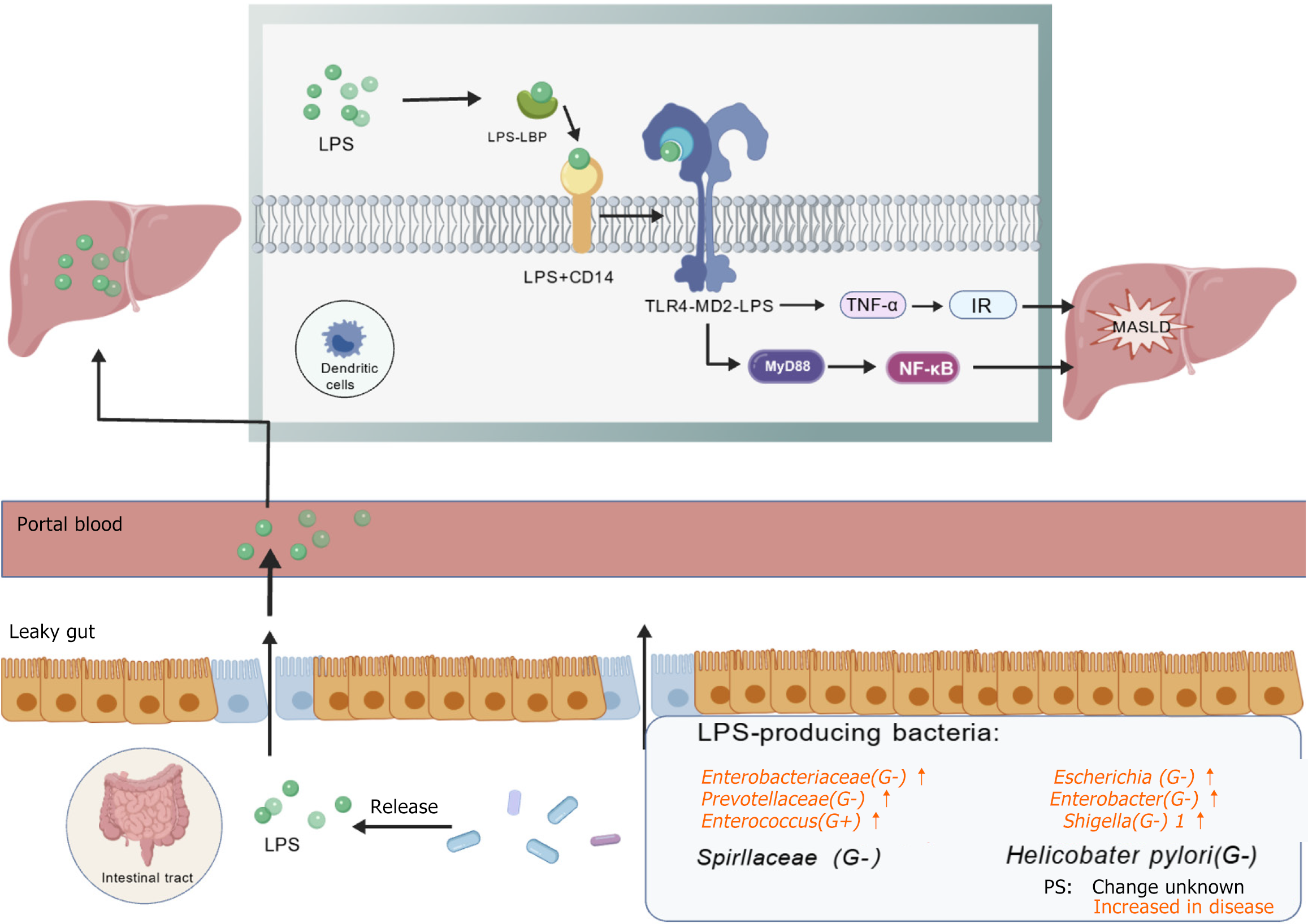Copyright
©The Author(s) 2025.
World J Hepatol. Mar 27, 2025; 17(3): 103854
Published online Mar 27, 2025. doi: 10.4254/wjh.v17.i3.103854
Published online Mar 27, 2025. doi: 10.4254/wjh.v17.i3.103854
Figure 4 In the intestine, lipopolysaccharide-producing microorganisms spread through the intestinal leakage into the portal vein circulation and then reach the liver, where they release lipopolysaccharide.
By binding to the TLR4-MD2 receptor, this process exacerbates the occurrence of metabolic dysfunction-associated steatotic liver disease. LPS: Lipopolysaccharide; LBP: Lipopolysaccharide-binding protein; IR: Insulin resistance; MASLD: Metabolic dysfunction-associated steatotic liver disease. Created from BIOGDP.com[93].
- Citation: Shu JZ, Huang YH, He XH, Liu FY, Liang QQ, Yong XT, Xie YF. Gut microbiota differences, metabolite changes, and disease intervention during metabolic - dysfunction - related fatty liver progression. World J Hepatol 2025; 17(3): 103854
- URL: https://www.wjgnet.com/1948-5182/full/v17/i3/103854.htm
- DOI: https://dx.doi.org/10.4254/wjh.v17.i3.103854









